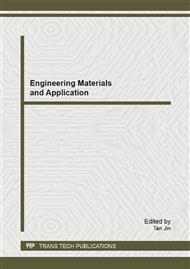p.820
p.825
p.829
p.835
p.841
p.846
p.852
p.858
p.864
Method to Detect SQL Injection Attacks for Complex Network Environment
Abstract:
SQL injection has become a serious security risk among all the attacks against Web application. The SQL injection attack allows an attacker to access the underlying database unrestrictedly, and furthermore, retrieves the confidential information of the corporation and the network user. We found that most of the existing researches are able to detect most of the attacks, but they do not consider the complexity involved in using the defense system and the eventual cost of modification of the original program. For this reason, we conducts an in-depth research on SQL injection and defense: requires no modification of the web application code,and can be adapted to different usage scenarios,involving also different operating systems and server applications,and can be able to detect all the known injection points for the test application
Info:
Periodical:
Pages:
841-845
Citation:
Online since:
January 2013
Authors:
Keywords:
Price:
Сopyright:
© 2013 Trans Tech Publications Ltd. All Rights Reserved
Share:
Citation:


